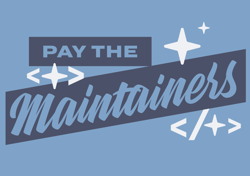Join our lifter Slack community! There are three main goals for this Slack community:
- A place for lifters to connect directly with fellow lifters.
- A direct line of communication with the Tidelift team for asking questions or engaging in discussion in a higher fidelity way than email.
- A simple way to provide rapid feedback on anything you’re encountering within the product.
If you are already a Tidelift lifter and are interested in joining the Slack, please send us a note at lift@tidelift.com. We hope to see you there!
